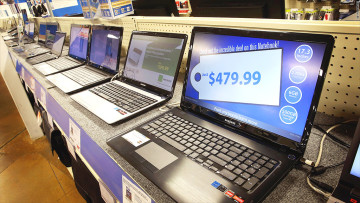 According to Beancounters at IDC, European IoT spending will climb to $227 billion in 2023, despite market uncertainty.
According to Beancounters at IDC, European IoT spending will climb to $227 billion in 2023, despite market uncertainty.
According to the Worldwide Internet of Things Spending Guide published by International Data Corporation (IDC). IoT-related spending is expected to expand at a five-year compound annual growth rate (CAGR) of 11 per cent, reaching almost $345 billion by 2027.
IoT development in Europe reflects enterprises’ evolving digital transformation investment objectives related to cost reduction, process streamlining, automation, and enhanced customer experience.
There are varying dynamics in regional markets. Central and Eastern European (CEE) organisations’ investments, for example, remain significantly below the European market average, with expected single-digit increases over the forecast period. In the last three years, many investments were put on hold in CEE, due to the various challenges related to the pandemic, the war in Ukraine, and the overall pressured macro-economic environment.
As IoT has proven to be integral to cost reduction, process optimisation, automation, and enhanced management and monitoring capabilities, IDC expects investments to accelerate by the end of the forecast period.
From an overall industry perspective, European IoT spending will be driven by investments from manufacturing, utilities, and professional services organisations.
Prominent use cases will include production asset management, distribution automation, and infrastructure for smart buildings. The fastest adoption of IoT will be seen across use cases such as irrigation management in the resources industry and fleet management in transport.
In terms of technology, modules and sensors will continue to drive IoT-related spending, followed by related services such as industrial maintenance to support the ongoing operation of device hardware (“things”), vertical business process outsourcing services, infrastructure as a service, and data as a service.
Low power wide area networks (LPWANs) will see the fastest-growing investments and will be a critical IoT area for telecom providers in the next few years. Spending on analytics software will also increase, as organisations strive to turn data collected by connection endpoints into actionable insights.
IDC’s European Data & Analytics Team research analyst Alexandra Rotaru said that due to the uncertain macroeconomic context, European organisations are expected to continue feeling pressure on budgets, with additional investments restrained in the short and medium term.
“However, IoT will remain a critical tool for improving performance and efficiency and increasing automation capabilities. It will continue to be a key investment area, helping organisations to reduce costs and enhance productivity despite challenges.”
 The semiconductor industry is poised for a new wave of growth next year as the global demand for artificial intelligence (AI) and high-performance computing (HPC) boosts the sales of chips for smartphones, personal computers, and infrastructure.
The semiconductor industry is poised for a new wave of growth next year as the global demand for artificial intelligence (AI) and high-performance computing (HPC) boosts the sales of chips for smartphones, personal computers, and infrastructure. Beancounters at IDC have added up some numbers and divided by their shoe size and concluded that GenAI software and related hardware and services are expected to see a massive surge in demand in the next few years.
Beancounters at IDC have added up some numbers and divided by their shoe size and concluded that GenAI software and related hardware and services are expected to see a massive surge in demand in the next few years. Sales of PCs have continued to decline during the third quarter but may have gone as low as they can, according to the number crunchers at IDC.
Sales of PCs have continued to decline during the third quarter but may have gone as low as they can, according to the number crunchers at IDC. Beancounters from IDC say that the global PC monitor market saw a year-on-year drop of 17.1 per cent during the second quarter of 2023.
Beancounters from IDC say that the global PC monitor market saw a year-on-year drop of 17.1 per cent during the second quarter of 2023. Beancounters at IDC have added up some numbers, divided by their collective shoe size, and projected that worldwide expenditure on public cloud services will surge to $1.35 trillion by 2027.
Beancounters at IDC have added up some numbers, divided by their collective shoe size, and projected that worldwide expenditure on public cloud services will surge to $1.35 trillion by 2027.
 Spending on compute and storage infrastructure products for cloud deployments, including dedicated and shared IT environments, increased 14.9 per cent year over year in the first quarter of 2023, according to beancounters at IDC
Spending on compute and storage infrastructure products for cloud deployments, including dedicated and shared IT environments, increased 14.9 per cent year over year in the first quarter of 2023, according to beancounters at IDC According to Beancounters at IDC, European IoT spending will climb to $227 billion in 2023, despite market uncertainty.
According to Beancounters at IDC, European IoT spending will climb to $227 billion in 2023, despite market uncertainty. The European software market grew by 15 per cent year on year in 2022 despite economic turbulence and global instability.
The European software market grew by 15 per cent year on year in 2022 despite economic turbulence and global instability.







